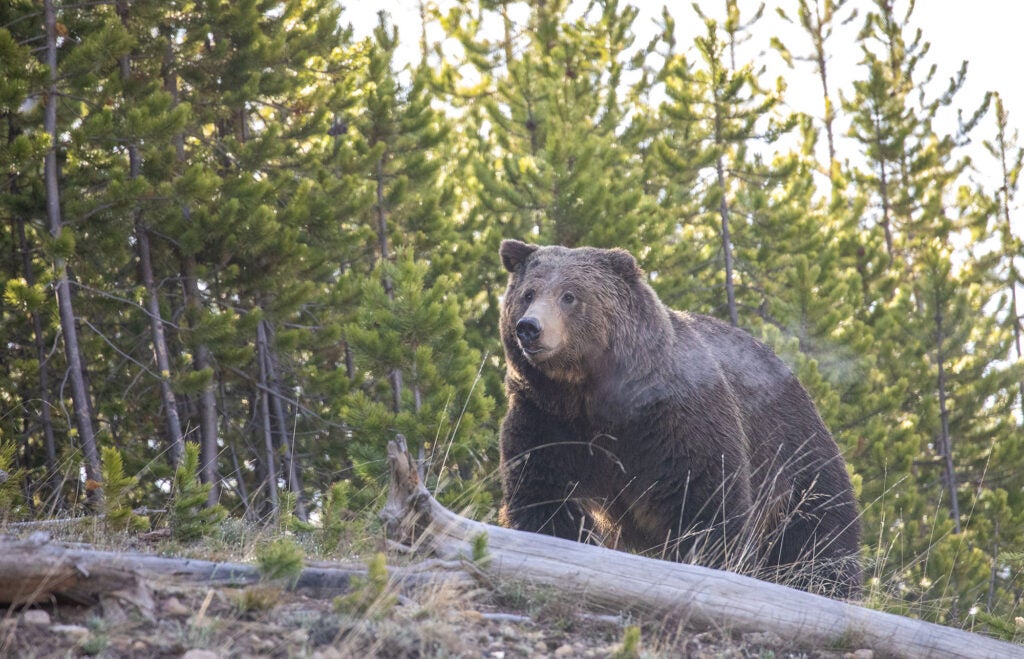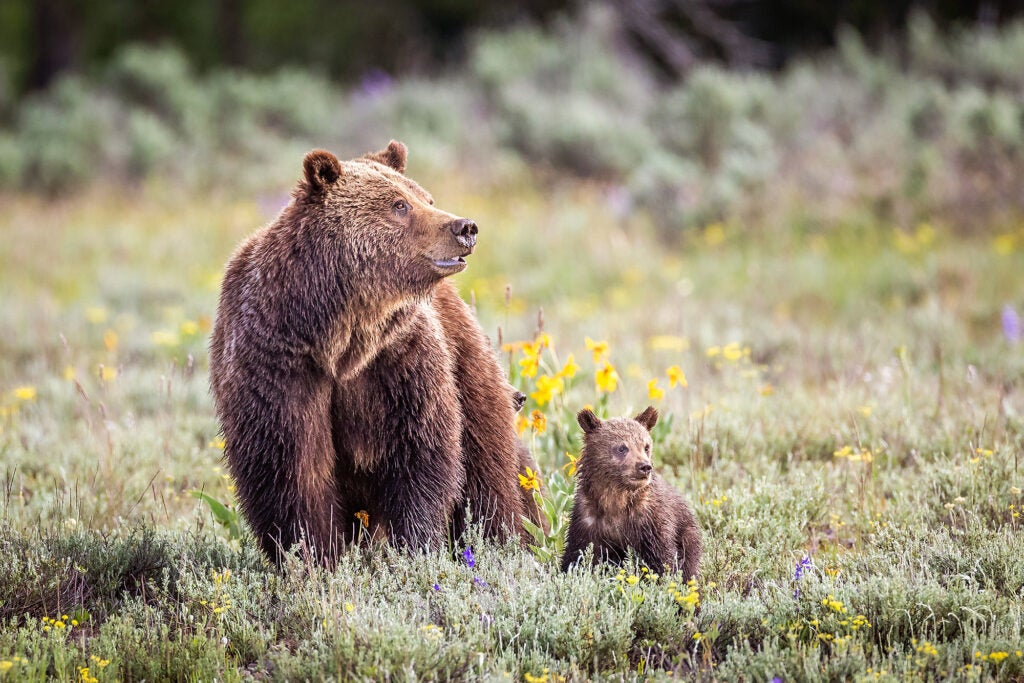Protecting Grizzly Bears in the Greater Yellowstone Ecosystem
Grizzly bears in the lower-48 states were reduced to 1% of their historic range and 1–2% of their historic numbers due to persecution and habitat destruction associated with the march of human development.
Regional Office / Program
Case Overview
Grizzly bears in the lower-48 states were reduced to one percent of their historic range and one to two percent of their historic numbers due to persecution and habitat destruction associated with the march of human development. One of their last remaining strongholds exists in Yellowstone National Park and surrounding public lands.
In recent years, the federal government has attempted to remove Endangered Species Act protection from Yellowstone-area grizzly bears. Earthjustice stepped in to oppose that effort as part of a broader campaign to protect grizzlies from excessive killing and habitat destruction.
In November 2011, a federal appeals court upheld a lower-court ruling that reinstated Endangered Species Act protections for Yellowstone’s iconic grizzly bear population. The court agreed with Greater Yellowstone Coalition, represented by Earthjustice, that the government’s irrational response to the loss of a key food source due to climate change requires continued federal ESA protections for Yellowstone’s grizzlies.
One month later, a federal appeals court provided additional protections to grizzly bears and other Yellowstone wildlife by ruling that the Forest Service must protect a wilderness study area adjoining the northern boundary of Yellowstone National Park from damage and disruption caused by snowmobiles and dirt bikes. The area contains important habitat for grizzly bears, wolverines, and lynx, but the Forest Service authorized escalating levels of snowmobile and motorcycle use in the area. In response, conservation groups, represented by Earthjustice, filed a lawsuit to enforce legal protections for the area under the 1977 Montana Wilderness Study Act.
In 2015, conservation groups filed a legal challenge against two federal agencies for approving the killing of four grizzly bears, a threatened species, within Grand Teton National Park in northwest Wyoming.
Federal biologists acknowledge that the growth of the Yellowstone grizzly bear population has flattened over the past decade. Recently, the grizzly population has been faced with the loss of two of its most important food sources in the Yellowstone region—whitebark pine seeds and cutthroat trout—due to changing environmental conditions driven in part by a warming climate. In the wake of these changes, scientists have documented the bears’ transition to a more meat-based diet, but that diet leads to a greater potential for conflict with human activities, resulting in more grizzly mortalities.
Such increasing grizzly bear mortalities are of particular concern because analysis of government grizzly bear conflict and mortality data shows a declining population trend for the Yellowstone-area population from 2007–2013.

Case Updates
Case page created on February 19, 2001.

